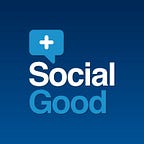How Can Countries Progress Their Sustainable Agendas?
By Jose Arrieta, Social Good Peru Chapter leader
The 2030 Agenda, approved in September 2015 by the General Assembly of the United Nations, proposes a transformative vision towards the economic, social, and environmental sustainability of the 193 member states that signed it, including Peru.
The 2030 Agenda defends a new way of thinking about development. From my point of view, a key challenge in the development of the 2030 Agenda is to mobilize private and public resources to channel them towards the SDGs. I strongly believe that public and private resources must be combined in order to maximize their effects on development.
Nowadays, the countries of Latin America and the Caribbean face increasing demands and have increasingly stringent budgets. Private flows have become the main source of financing for developing countries in Latin America and the Caribbean, as well as remittances.
In order to effectively monitor the progress made in the implementation of the SDGs, governments must adapt their decision-making to the compilation, disaggregation and dissemination of data and statistics.
In order to do this, governments must strengthen their national statistical systems and adopt a broad approach in the framework of global indicators.
For example, the non-profit organization Bertelsmann Stiftung and the Red de Soluciones de Desarrollo Sostenible de la ONU have created a prototype index that measures their performance on how close are countries to achieving the SDGs.
The SDG index measures 149 countries, comparing their current progress with baseline measurements taken in 2015.
Sweden is first in the list of surveyed countries for progress on the 17 goals. It’s important to mention that the report says that many high-income countries perform well in areas such as economic development, but still do not achieve a good overall performance in the SDGs.
This is because these countries still face significant challenges that have not yet been resolved, such as gender equality, income inequality, climate change mitigation, and education.
For example, the first three countries in the report are Sweden, Denmark and Norway. If these countries wish to continue to achieve good overall performance in the SDGs, they must focus in the coming years on the transition of their energy systems from high carbon sources to low carbon sources — which will help them to achieve the environmental sustainability goal.
In order to further deepen my knowledge about how to implement the SDGs in Peru, I attended the I Forum Integration to the Bicentennial organized by RPP Group on May 11. Participants in this forum included Peruvian government authorities, businessmen, and representatives of civil society.
The RPP Group made invited me to participate in the forum on behalf of Social Good Peru. The invitation to Social Good Peru was made in recognition of the contributions and efforts achieved through strategic alliances with the business sector, government, and academia to implement the SDGs in the country.
The objective of the forum was to encourage involvement and participation in the construction of a Peru developed based on sustainable, viable proposals, both medium and long term. Likewise, it sought to put key issues for the development of Peru on the public agenda, with a view towards 200 years of its independence.
What I learned in this forum is that the process of constructing a vision of the future of the country requires a comprehensive knowledge of the country’s reality. In other words, we must understand how people live in their local reality (ecosystems, watersheds, development access). Likewise, we must know the population’s needs.
The first step is to look back and assess what has been achieved. This allows us to determine how some objectives succeeded and why others were abandoned along the way.
I’m convinced that to continue developing the Peru it is necessary to generate more meaningful connections with the main representative groups of the country. A key factor is to generate spaces for discussion on policy priorities in order to raise awareness and raise levels of commitment to development policies in relation to the SDGs.
Although Peru is considered by the International Monetary Fund as one of the most stable economies in Latin America, it has also obtained the worst scores in international educational evaluations in the years when it participated: 2012, 2009, and 2000.
Peru has a lot of work to do to be a developed and sustainable country, however we can observe that some progress is currently being made.
As of September 2016, the Peruvian state has oriented its efforts to update sectoral policies of a national scope, incorporating the guidelines of the Sustainable Development Goals within its policies and plans. In this way, the Peruvian state seeks to build a concerted vision of the country by 2030.
